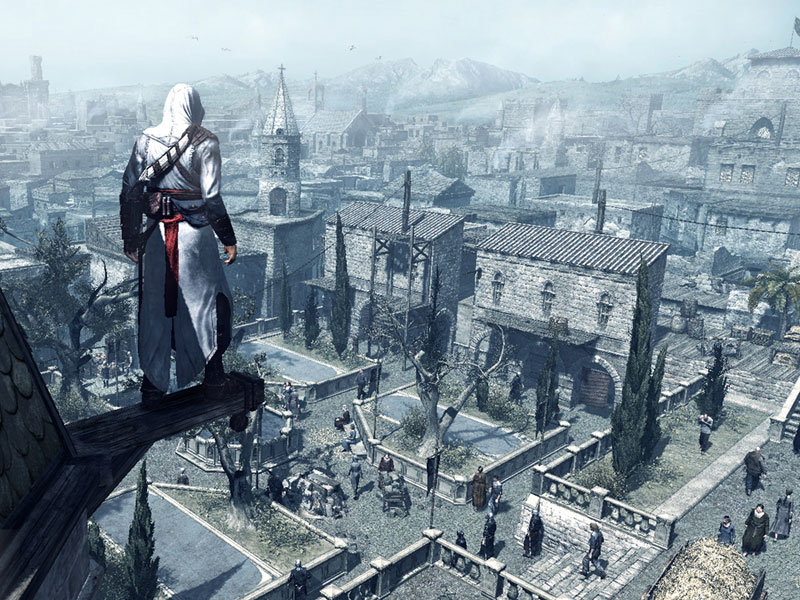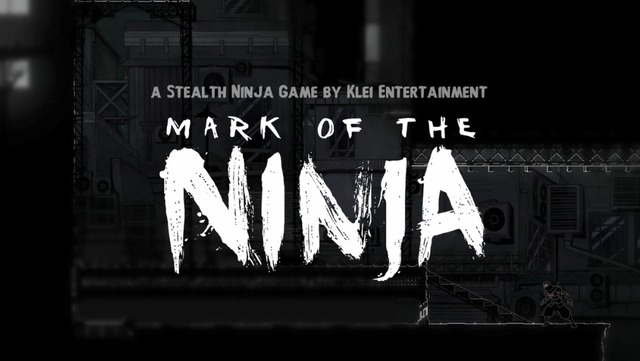Last updated on March 4, 2013
Whew, September is starting to speed up. I have to say, though, it’s weird not going to school in any way, shape, or form; I don’t think I’ve been out of that schedule since I was five years old or so. Anyway, welcome to Monday Update, where I ramble on about things.
Assassin’s Creed series – I know I’m going to be talking about Assassin’s Creed a LOT more, but I may as well throw some thoughts out there in advance. Just because.
Having only played the first game until recently, I think my negative opinion on it stemmed from how…repetitive the first game really is. I got it for nine dollars or so on eBay (in what, 2008?). When someone summarize the entire game as “kill nine dudes”, they’re not exaggerating in the least. For whatever reason, Ubisoft decided that they would be better off making a prototype game rather than a game in itself. Open world Prince of Persia doesn’t directly translate to a great game; it needs pacing. The original lacks this spark. As much as the setting is amazing and should be used in games (The Crusades are fascinating in and of themselves), it wastes this presentation by having nothing underneath. It’s incredibly repetitve and the three cities you enter look exactly the same. There are huge periods of downtime between cities, and you’re nearly forced to use the fast travel options unless you like to waste time riding a digital horse across a digital landscape (which, frankly, got boring when there was nothing to do in them; QED). Sidequests remain virtually non-existent, with a race here and a flag scavenger hunt there. They give no real incentive to pursue them at all. Combat consists of waiting for enemies to attack, then countering. There’s little feedback as to when enemies will attack or won’t; it’s too random to be challenging, and too easy to be fun. Sometimes, it’s frustrating when enemies counter you for no good reason.
The second game, on the other hand…wow, is it such an improvement. I was so put off by the first that I didn’t even bother to catch up, having assumed it was similar. One Steam sale later (and the whole series for thirty dollars, yay) and here I am completely captivated. Renaissance Italy provides a much more interesting landscape, I have to admit, as they can show the diversity of the various Italian city-states in their prime. Florence is different from Tuscany, which is very different from Venice, and each has a unique flavor. Florins are your currency, which you use to buy upgrades for yourself and for your own villa, which has its own income (very, very cool). Sidequests provide money like the main missions, and many capture that Prince of Persia vibe perfectly with enclosed spaces mixed with acrobatics that require precision. It’s a better game overall, yet I have some quibbles with it. The story, for instance, seems entirely derivative; the first game nailed a philosophical tone that reminds me of Bioshock. Sure, it was entirely unrealistic, but we were assuming the Animus was scanning memories, right? It made sense. Ezio, though a relatable protagonist, doesn’t really provide you with the same vibe at all. It’s a by-the-numbers revenge story, and there’s not much moral ambiguity to go around. I imagine this was a conscious decision, given that this is now A Big Budget Franchise (TM), so we can’t be thinking too much about how many dudes we murder incessantly during the game, right? Yeah, right.
Still, I have to say I enjoy both. I am captiviated by the second more than the first, though; it’s a great sequel so far. I’ll be talking more about this in the week ahead.
Mark of the Ninja – The folks at GameChurch were kind enough to give me a review copy of the game. It’s rather excellent! I love 2D animation, so when it’s done well I can’t help myself. Stealth action hasn’t been done by a Western studio in a long time, either, so Klei Entertainment fills a possible empty market here. Frankly, I would not have known it existed if I didn’t actually review it.
So, what’s special about this? The ninja trope has been done to death in video games – why this one? Real ninjas were not like the ones in Ninja Gaiden – straightforwardly chopping down every single enemy (and object in sight). Rather, real ninjas succeed because of deception, not through overpowering one’s foes. Like Batman, it’s making your enemies think you are something more than what you really are that makes the ninja a dangerous adversary. So it is with Mark of the Ninja. Your player character doesn’t excel at melee combat. If you’re found by soldiers, it’s doubtful you will survive unless he is by himself or you have a tool to escape that situation. However, stealth kills will automatically kill enemies in one felt swoop. Thus, your objective is obvious: don’t get caught and sneak up on your enemies. Direct confrontation will often fail you; in fact, avoiding conflict altogether is a viable option.
Mark of the Ninja provides excellent feedback to the player in their secretive playstyle. Because of the aesthetics, the sounds you make are represented by waves emanating from the player character; if these touch a guard or enemy, then they will hear you. It will also show where the guard will investigate based on the sounds he heard. This mean you must be careful when you run and what you do, but it also means you can use sounds to goad enemies into disadvantageous positions easily. You have a variety of tools for this purpose, including darts (which just annoy, they don’t kill), smoke bombs, hallucinogenics (which cause soliders to go crazy and kill other people), as well as your handy-dandy sword. My personal favorite is breaking every light in a room; this provides you with cover (light is your worst enemy) and makes the process of eliminating your foes incredibly easy.
Of course, things aren’t that simple. Some enemies remove your advantage through heat detection or radar, and that makes the process all the more difficult – and fun! Snipers will one shot your, forcing alternate routes through levels (of which their are many). Some require you to stun enemies first, which is more difficult than you’d think. Everything you do is a brain-teasing puzzle (and yes, there are straightforward puzzles), and it’s incredibly satisfying to solve them. There’s genuine risk because you’re so fragile, similar to Demon’s Souls.
Still, the checkpoints are extremely generous, and this hampers the game. Sometimes, you’ll die in a particular situation, yet you crossed the invisible dividing line of the checkpoint, allowing you to progress without completing that situation; this really irks me! I want to hit a brick wall, and the game pushes you foward regardless, whether by bad programming or otherwise. The controls sometimes do too much with too little; I found the grappling and jumping to be quite sloppy sometimes; making the transition from a wall to a ceiling had me frustrated for minutes trying to make the transition only to fall to some horrible end. It’s similar to Assassin’s Creed – too many functions, too little controls to do it.
Overall, though, it’s a finely-tuned machine that learned the harsh lessons of stealth games in the past, which usually required a specific sequence of events and near memorization of levels; that isn’t required here. Rather, your wits and reflexes are both important. That’s a good shift, although I lament the lack of proper punishment for failure. Yes, it let me complete the game faster, but it’s not that satisfying to do the same thing from three seconds back, or even skip a part due to checkpoints.
———————————————————————————————————————————————————————————————————————–
That’s it for Monday Update! I am definitely doing some Assassin’s Creed stuff this week, so stay tuned!


